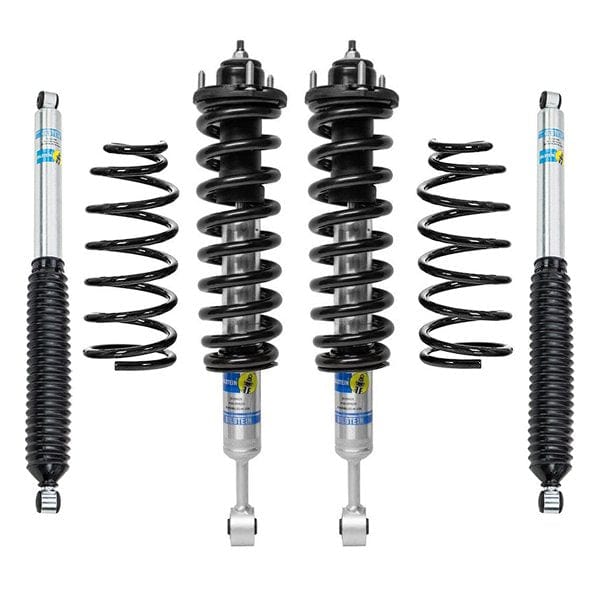

Bilstein
Bilstein 5100 + OME Bolt On Lift Kit / 4th Gen 4Runner (03-09) + FJ Cruiser (07-09)
The best deal for an assembled Bilstein 5100 kit on the market! We take the hard work out of upgrading your suspension- all struts will ship fully assembled, ready to bolt on to your vehicle! It's that easy.
One of the best 4Runner Lift Kits for the money, the Bilstein 5100/OME kit for the 4th Gen 4Runner (03-09) and FJ Cruiser (07-09) will help get you offroad without breaking the bank. The kit includes front shocks, rear shocks and coils specific to your vehicle. Match the correct coils with your vehicles added weight, if any, to gain the best ride quality and performance.
Included Parts;
-A Pair of Assembled Front Struts with Bilstein 5100 Shocks and your choice of OME coils
-A Pair of Rear Bilstein 5100 Shocks
-A Pair of Rear OME Coils of Your Choice
Recommended Add Ons
Upper Control Arms - If you're lifting the vehicle over 2in, you will need aftermarket Upper Control Arms to get your alignment into spec.
Durobumps Custom Fit bump stops - Durable and much softer than your stock bump stops. Avoid those hard bottom outs and keep your suspension investment safe.
OCD Sway Bar End Links - If you wheel, you will eventually snap a stock sway bar end link. Do away with that permanently with upgraded sway bar end links. Adjustable for lifted vehicles.
Diff Breather Kit - Relocate your rear differential breather to your gas cap area or tail light to avoid sucking in water or clogging the breather. Either of those situations can cause thousands in damage.
Eimkeith Panhard Correction Kit - Regain your rear stability after a lift with the eimkeith PCK. This bracket allows you to raise the mount of the panhard bar to its factory angle after a lift, greatly reducing body roll and improving the ride.
Diff Drop Kit - Bolt on kit to improve your CV axle angle after lifting the vehicle
Ark Splash Guards - Replace those ugly, worn our splash guards with a new, high quality set from Ark Splash Guards.
